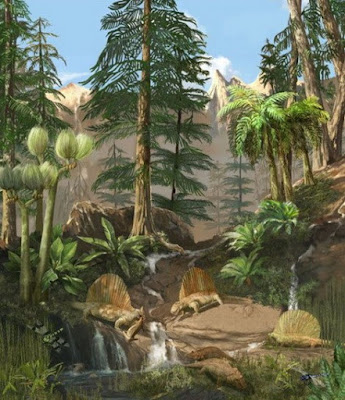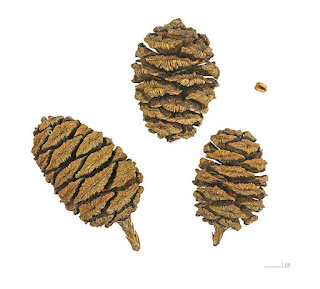Byron and Phyton, Meet the Bryophytes!
During the Upper Ordovician era 475 million years ago, the
terrestrialization of charophycean algae led to the evolution of the first
permanent land-dwelling plants, the bryophytes (Willis & McElwain 2014). The
term bryophyte is derived from the Greek words Byron, meaning moss, and Phyton,
meaning plant (Reece & Campbell 2012). It is used to describe plants with
no vascular or specialised transportation system. There are three phyla within
the bryophyte group. Anthocerophyta, the
hornworts.
Bryophyta, which are the mosses. And lastly, Hepatophyta or the liverworts
(Reece & Campbell 2012).
(Classification of bryophytes, Plant science 4 U 2016)
Although bryophytes lack a specialised vascular system, they
do have simple water conducting cells which are non-lignified (Willis & McElwain
2014). They also have several shared characteristics with vascular plants of
today, which enables them to be distinguished from charophytes (Evert, Raven &
Eichhorn 2013). These characteristics include tissues produced by an apical
meristem, protectively walled gametangia, matrotrophic embryos,
sporopollenin-walled spores, and life history involving the alternation of
heteromorphic generations (Evert, Raven & Eichhorn 2013).
Although both vascular plants and bryophytes have
alternation of generations, in which the gametophyte differs from the
sporophyte, there are major differences within the life cycle of bryophytes. Due
to free living gametophytes, and a sporophyte which is permanently attached to
its parental gametophyte, emphasis is placed on the gamete-producing generation
(Evert, Raven & Eichhorn 2013). During the sporophyte generation spores are
also produced which allow for maximum distribution through anemochory (Willis
& McElwain 2014).
Bryophytes also lack true stems, leaves and roots and are
mostly small herbaceous plants. With the absence of vascular tissue in
bryophytes, vertical growth was restricted. To overcome this, bryophytes
adopted dorsiventral shaped growth. This is where the plant does not grow
vertically, only horizontally across the substrate in which it is anchored to
via rhizoids (Willis & McElwain 2014). This allows for greater surface area
across the entire plant to absorb sunlight for photosynthesis, and,water
absorption from condensation or moisture directly across the cell surface (Evert,
Raven & Eichhorn 2013).
The bryophytes are a vital piece of the plant puzzle, which
allows us to understand the origin and transition of land plants and their
importance in many ecosystems today.
References
Evert, R.F., Raven, P.H. & Eichhorn, S.E. 2013, Biology of plants, Eighth edn, W.H.
Freeman and Company Publishers, New York.
Pearson, L.C. 1995, The
diversity and evolution of plants, CRC Press, Boca Raton.
Reece, J.B. & Campbell, N.A. 2012, Campbell biology, 9th (Australian version) edn, Pearson Australia,
Frenchs Forest, N.S.W.
Willis, K.J. & McElwain, J.C. 2014, The evolution of plants, Second edn, Oxford University Press,
Oxford.
Plant
science 4 U 2016, The classification of bryophytes,
image, viewed March 2018, <https://www.plantscience4u.com/2014/04/classification-of-bryophytes.html#.WrXjUnpuaHs>.
Dr Larry Jensen 2003, Reproductive cycle of mosses/ The amazing lives of plants. [online video]
Available at: https://www.youtube.com/watch?v=_MFnZjpTFT8 [accessed 24 March 2018]
Dr Larry Jensen 2003, Reproductive cycle of mosses/ The amazing lives of plants. [online video]
Available at: https://www.youtube.com/watch?v=_MFnZjpTFT8 [accessed 24 March 2018]



A nice post on the early plants. I am curious though: how do you think alternation of generations evolved?
ReplyDelete